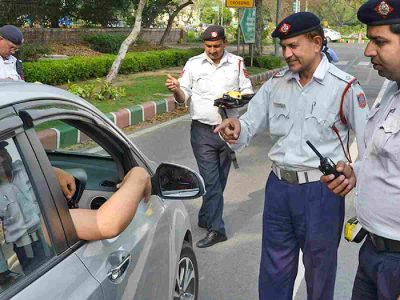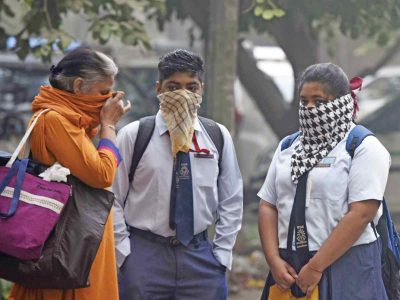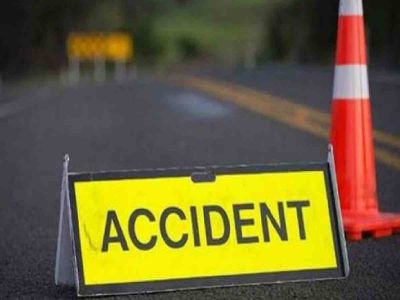As you step into the Royal Cemetery on Prithviraj Road, just a short distance from the bustling India Gate, the clamour of Delhi’s traffic fades into an eerie silence. This tranquil enclave feels like another world—a stark contrast to the noisy streets outside. The quiet welcomes you, inviting reflection on how two such different realms can exist so close to one another. Inside, a few visitors may be seen standing solemnly by graves, placing flowers or lighting incense in quiet tribute.
A sober landmark
Among the many graves in the cemetery, a striking black sandstone memorial on the left side draws attention. Inscribed in Japanese, the epitaph reads: “In Memory of Those Who Died in the Disaster at Jaitpur, Near Delhi on 11 January 1972, Whose Ashes Are Buried Here.” Below, the names and nationalities of the victims are listed.
This modest yet poignant grave commemorates the 86 passengers who perished in the tragic crash of Japan Air Lines Flight 471 near Jaitpur village in South Delhi. The ill-fated flight, carrying mostly passengers from the United States, Britain, Australia, Brazil, and Japan, crashed just short of Palam Airport. Old media reports also note that four people on the ground lost their lives—a grim parallel to the recent Air India crash in Ahmedabad, where ground casualties were similarly reported.
Also read: Valmik Thapar, the tiger conservationist’s little known side
A tragic day in 1972
On June 14, 1972, Japan Air Lines Flight 471—a Douglas DC-8-53 registered JA8012—was en route from Bangkok to New Delhi as part of its Tokyo-to-London journey. The aircraft caught fire mid-air and crashed in flames near Jaitpur, scattering wreckage over a two-square-mile area. It was Japan Air Lines’ first fatal accident in over 20 years and the second air incident in India that year. Just a few months later, Flight 472 crash-landed in Bombay on September 24 due to pilot error and airport confusion, though that accident was non-fatal.
Among the 86 victims on Flight 471 were 16 Americans, Brazilian actress Leila Diniz, and Dr KK Narasinga Rao, a senior official with the United Nations Food and Agricultural Organization (FAO), who was the sole Indian on board.
Echoes of memory
Even more than 50 years later, the tragedy remains vivid in the memory of Delhi businessman D Joshi.
“For several days, my father discussed the horrific accident with our neighbours,” he recalls. “Some of them even went to the crash site to help the victims.”
The tragedy left a lasting mark on the local community, with stories of loss and heroism lingering in collective memory.
Unanswered questions
The exact cause of the crash remains disputed. Japanese investigators pointed to a possible false glide path signal. Indian authorities, however, attributed the crash to pilot error, citing the captain’s failure to follow instrument indications and a lack of visual contact with the runway.
Yoshine Takagi, vice president of Japan Airlines, who led the investigation, did not rule out sabotage. This prompted police to examine passenger backgrounds, but no conclusive evidence of foul play was found.
Honouring the fallen: A lonely tribute
Standing by the black sandstone grave, one is reminded of lives lost far from home—and wonders about their loved ones. Who visits to place flowers or offer prayers?
“I place flowers at this grave whenever I come here. Hardly anyone else visits; it remains deserted and lonely,” says Brother Solomon George, a priest associated with the Delhi Brotherhood Society.
“The cemetery staff maintains it well, though, thanks to the efforts of the Japanese embassy, which ensured the victims’ ashes were buried here,” he adds.
Also read: Delhi contributes to 76 per cent of Yamuna’s pollution: Study
Names etched in stone
As you prepare to leave the Royal Cemetery, you pause to read the names on the Japanese memorial once more. Among them are Janet Campbell, Mary Campbell, and Samuel Campbell from Britain—likely family members—and Suzane and William Houbert from Australia, possibly relatives. Some names have faded over time, weathered by the elements.
As you exit, you pass the graves of prominent figures such as former Indian President KR Narayanan, socialist leader George Fernandes, and Jessica Lal, the model tragically killed in 1999. Each grave tells a story, but the Japanese memorial stands apart—a haunting reminder of a tragedy that transcends borders and time.





